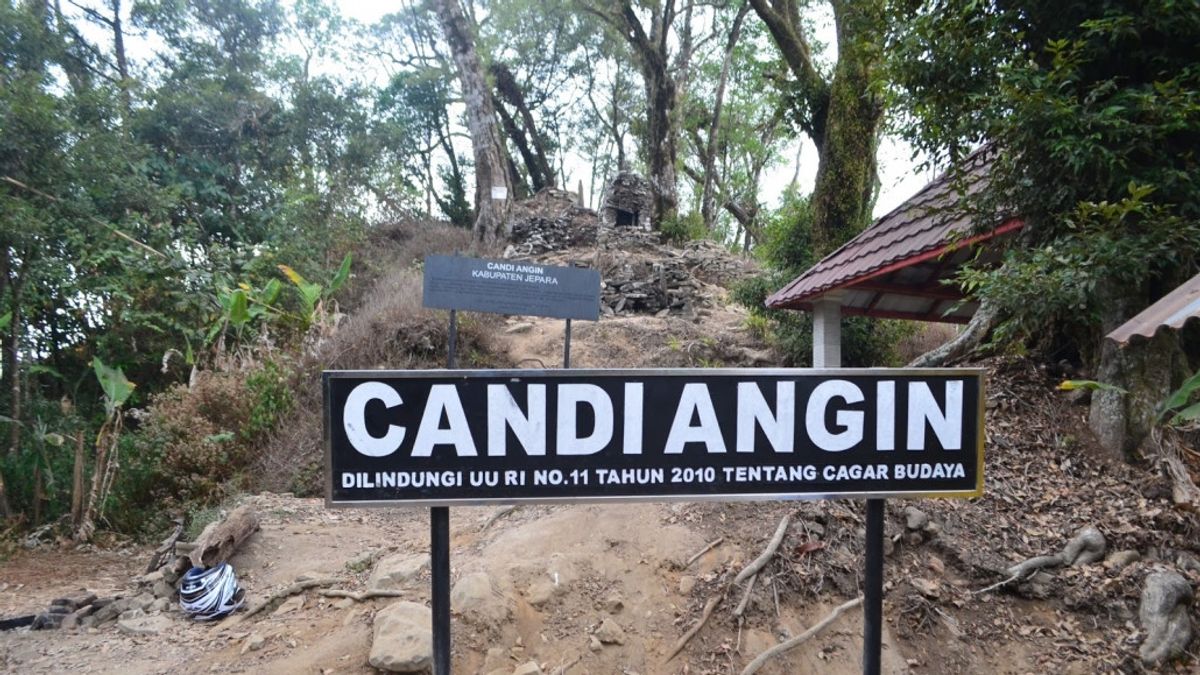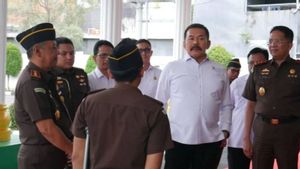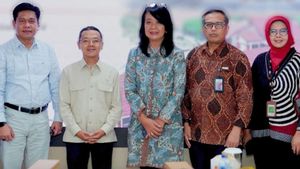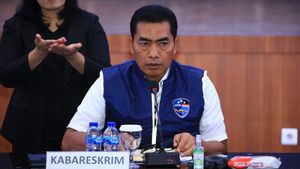JAKARTA - Long before Indonesia was born, one of the kingdoms that once ruled parts of Java was the Kalingga kingdom. The kingdom of Kalingga is a Hindu-style kingdom that began to develop around the 7th century AD. Another name for this kingdom is Ho-ling. There are several historical sources of the Kalingga kingdom which are used as research references for its existence.
According to Agus Aris Munandar in Kaladesa Early History of the Archipelago, in the early period of history up to 700 AD the historical sources of the archipelago mainly came from China or China.
Historical sources of the Kalingga kingdom or Ho-ling · Tuk Mas inscriptionThis inscription with the letters Palawa and Sanskrit was found on the western slopes of Gurung Merapi, precisely in Lebak Village, Grabag District, Magelang Regency, Central Java. In it, there is praise paid to springs that emerge from crevices in the rock like the Ganges — a river in India.
· Sojomerto inscriptionThe Sojomerto inscription was found in Sojomerto Village, Reban District, Batang Regency, Central Java. Unlike the Tuk Mas inscription, this inscription uses the kawi letters and the language in Old Malay. The content of this inscription is a story about Dapunta Syailendra's family or dynasty. According to Prof. Drs. Boechari, Dapunta Syailendra were the forerunners of the kings who descended from the Syailendra House.
· Chinese news from the Tang DynastyIn this Chinese news, it is mentioned about the existence of the Holing kingdom, which is located in Cho-Po (Java). The Holing Kingdom is another name for the Kalingga kingdom.
· News from I-Tsing, a Buddhist priest from China.In the Chinese news, in the same century or adjacent to the century where the Tarumanegara kingdom was founded, it is known that there were other kingdoms in Java. The mention of Ho-ling is often equated with She-po (Cho-po) or Javanese.
According to WP Groeneveldt's opinion in Nusantara in Chinese Notes, there are two versions of the Tang Dynasty record that mention Ho-ling. First, the Old History of the Tang Dynasty (618-907), but this record is considered to be incorrect. The second is the New History of the Tang Dynasty, this record contains information that is considered more complete, especially regarding Java.
"The Javanese name has begun to replace the name Ka-ling," wrote Groeneveldt.
Regarding historical sources, there are several differences of opinion regarding the location of the Kalingga kingdom. Based on the Chinese news of the Tang dynasty, Kalingga was called She-o. It is located on the north coast of Java Island.
Another opinion came from JL Moens. He said, Kalingga is located on the Malay Peninsula. Similar to the opinion of the news from China, WP Meyer argued that the Kalingga kingdom was located in Central Java.
Talking about the territory, the kingdom of Kalingga is estimated to control the north coast in Central Java to the hinterland in the south. The center of government is thought to have existed in several areas, namely Jepara, Pekalongan, or the Dieng mountains.
Queen Shima and the Kalingga kingsBased on the Sojomerto inscription, the founder of the Kalingga kingdom was Dapunta Syailendra. The first king of the Kalingga kingdom was Prabhu Wasumurti. He headed Kalingga in 594-605 AD
After that, he was replaced by Prabhu Wasugeni with a reign from 605 to 632 AD Prabhu Wasugeni was the father of Queen Shima or Dewi Wasuwari. The female king who brought the Kalingga kingdom to the pinnacle of glory.
Queen Shima has been in power since 674 AD Before her, there were several kings who led the Kalingga kingdom, including Prabhu Wasudewa, Prabhu Wasukawi, and Prabhu Kirathasingha.
Queen Shima took the throne to replace her deceased husband, Prabhu Kirathasingha. Queen Shima succeeded in bringing the Kalingga kingdom to the pinnacle of glory.
He is known as a very strict leader. Because of his assertiveness, if there were items lying on the road, no one would dare to take them.
Once upon a time, there was a king who was curious about this. He is King Da-zi. To satisfy his curiosity, King Da-zi sent a bag containing money.
The bag is simply placed on the border of the Kalingga kingdom. The people who saw the bag just passed by. Nobody dared to touch it. The bag remains in the same location for up to three years.
Then, at one point the crown prince accidentally touched the bag containing the money. Queen Sima was furious that she wanted to kill him, even though he was her own son.
The ministers then prevented this. Queen Shima then wanted to cut off the child's leg because Kakin was the one who was guilty. The ministers prevented it again.
Queen Shima finally decided to cut off the crown prince's big toe. Queen Shima's stern attitude that is indiscriminate is an example for her people. Queen Shima's assertiveness finally made King Da-zi feel afraid to attack the Kalingga kingdom.
Kalingga royal relics 1. Tuk Mas inscriptionAs mentioned earlier, this inscription was found in Magelang Regency, Central Java, to be precise on the western slope of Mount Merapi. The Tuk Mas inscription contains information about clear and clean springs.
The river resulting from the flow of the spring is likened to the Ganges River, one of the holy rivers for Hindus located in India. In the inscription there are also pictures, such as a class frame, jug, trident, lotus flower, chakra, and ax.
2. Sojomerto inscriptionThe Sojomerjo inscription has a Shiva religious character. This inscription contains the family story of the main character Dapunta Syailendra, namely his father named Santanu, his mother named Bhadrawati, and his wife named Sampula.
3. Bubrah TempleThis temple is found in Tempur Village, Keling District, Jepara Regency, Central Java. This temple shows that in ancient times the northern coast of Central Java developed a Shiva-style Hindu kingdom.
4. Temple of the WindLike Bubrah Temple, this temple is also characterized by Shiva and its location is in Tempur Village, Keling District, Jepara Regency, Central Java.
The glory of the Kalingga kingdom and its downfallIt has been mentioned that the Kalingga kingdom met its heyday when it was led by Queen Shima. Then, what is the meaning of that heyday?
When Queen Shima took the lead, the Kalingga kingdom had progressed in various fields, such as military, economy, trade, religion and agriculture.
At that time, the Kalingga kingdom even had trade relations with China. One of the pillars of the progress of the commercial sector is the existence of the largest port of the Kalingga kingdom which is located in Pekalongan.
In Continuity And Change: Tradition of Islamic Thought in Java (2006: 36), it is stated that the port in Pekalongan has a very big role for the Kalingga kingdom to subdue the hegemony of the Tarumanegara kingdom.
Queen Shima's reign is 21 years. When led by Queen Shima, the Kalingga kingdom became the only large kingdom whose location was in the central part of Java Island and controlled the north coast.
Queen Shima is known as a strong leader, but respects differences. At that time, Kalingga was a kingdom that protected adherents of other religions, such as Buddhism and Muslims from the Middle East who came to the region to trade.
After Queen Shima died in 695 AD, the Kalingga kingdom began to weaken. In 752 AD, the kingdom collapsed. Based on the Hindu Budha Culture and Kingdom in Indonesia (2018), one of the causes of the collapse of the Kalingga kingdom was an attack from the Srivijaya kingdom on the island of Sumatra.
After the collapse of the Kalingga kingdom, the Medang kingdom or ancient Mataram was often called. The kingdom, whose center of government had moved to the eastern part of Java, was one of the kingdoms that became the rulers of Java at that time.
In addition to information about historical sources of the Kalingga kingdom, follow other domestic and foreign news only at VOI.id, Time to Revolutionize the News!
The English, Chinese, Japanese, Arabic, and French versions are automatically generated by the AI. So there may still be inaccuracies in translating, please always see Indonesian as our main language. (system supported by DigitalSiber.id)










